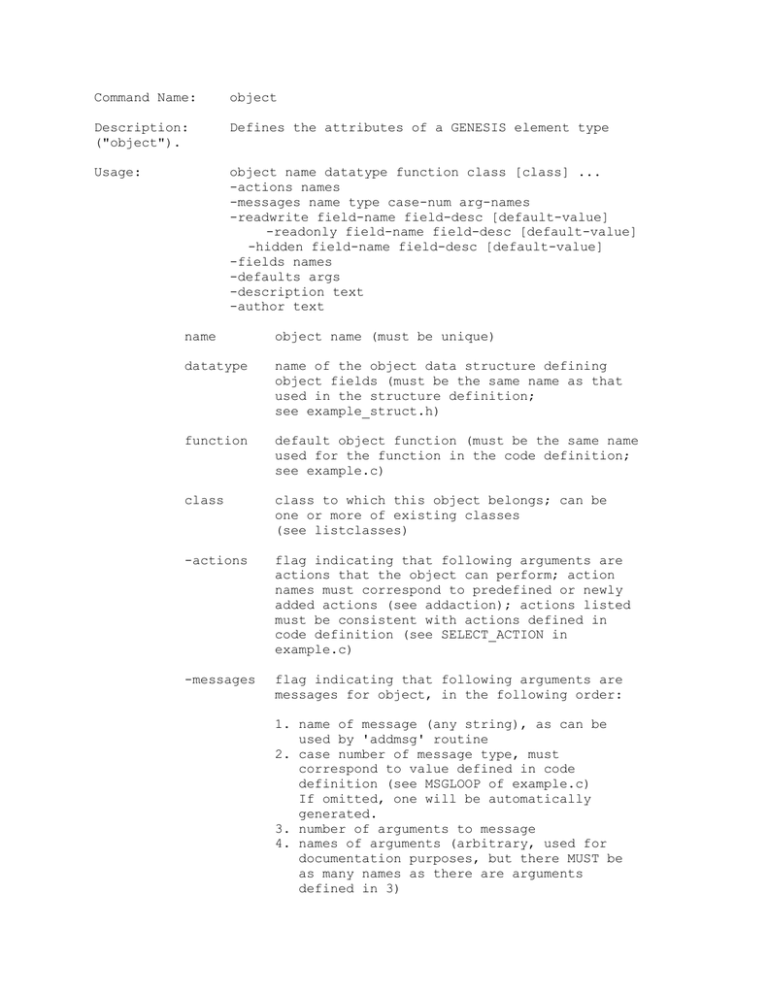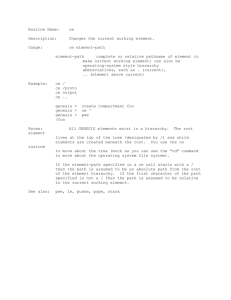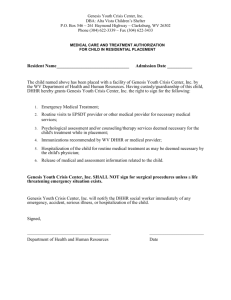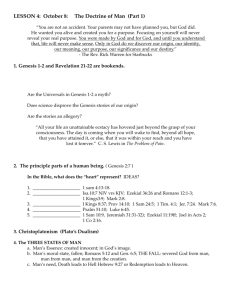OBJECT.DOC
advertisement

Command Name: object Description: ("object"). Defines the attributes of a GENESIS element type Usage: object name datatype function class [class] ... -actions names -messages name type case-num arg-names -readwrite field-name field-desc [default-value] -readonly field-name field-desc [default-value] -hidden field-name field-desc [default-value] -fields names -defaults args -description text -author text name object name (must be unique) datatype name of the object data structure defining object fields (must be the same name as that used in the structure definition; see example_struct.h) function default object function (must be the same name used for the function in the code definition; see example.c) class class to which this object belongs; can be one or more of existing classes (see listclasses) -actions flag indicating that following arguments are actions that the object can perform; action names must correspond to predefined or newly added actions (see addaction); actions listed must be consistent with actions defined in code definition (see SELECT_ACTION in example.c) -messages flag indicating that following arguments are messages for object, in the following order: 1. name of message (any string), as can be used by 'addmsg' routine 2. case number of message type, must correspond to value defined in code definition (see MSGLOOP of example.c) If omitted, one will be automatically generated. 3. number of arguments to message 4. names of arguments (arbitrary, used for documentation purposes, but there MUST be as many names as there are arguments defined in 3) -readwrite -readonly -hidden make field-name both readable and setable make field-name readable, but not setable hide field-name from view by showfield The remaining fields are added for the purpose of documenting the object and are optional. Example: channel \ object nernst nernst_type Nernst device -author -actions -messages "M.Wilson Caltech 3/89" \ PROCESS RESET CHECK \ CIN 0 1 Cin \ COUT 1 1 Cout \ TEMP 2 1 T \ -fields "E = equilibrium potential" \ "T = temperature in degrees celsius" \ "valency = ionic valency z" \ "scale = voltage scale factor" \ -description \ "Calculates Nernst potential for the given" \ "ionic concentrations and temperature." \ "E = scale*(RT/zF)*ln(Cout/Cin)" \ "A scale factor of 1 gives E in volts." \ "A scale factor of 1e3 gives E in millivolts." Notes: The object command is used to define the attributes of a GENESIS object. An object command is executed for each type of GENESIS element and defines the function associated with that element, the actions which are valid to perform on the element, any special GENESIS environment variables tagged to the element, any messages which can be passed to or from the element, and a brief description of that element. This initialization command is used when compiling new GENESIS libraries, and is not recognized by the SLI when GENESIS is running. See also: listobjects, addaction, newclass, showobject



